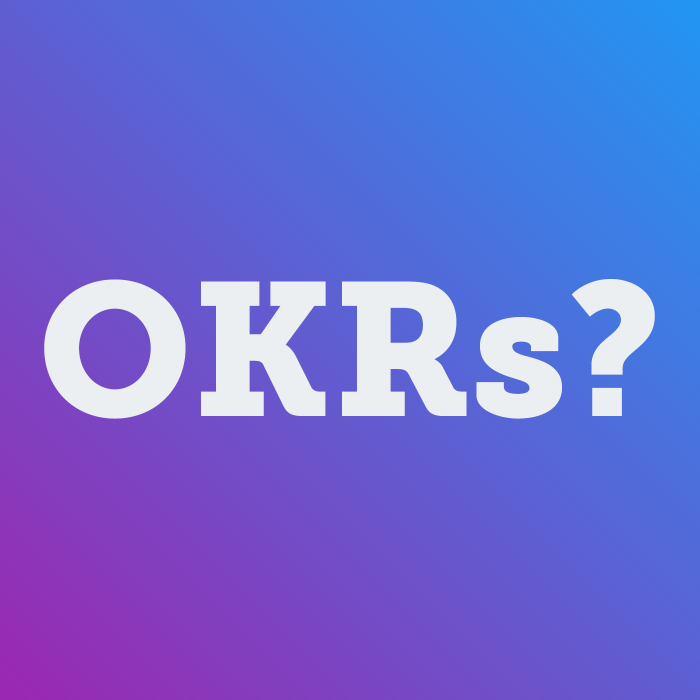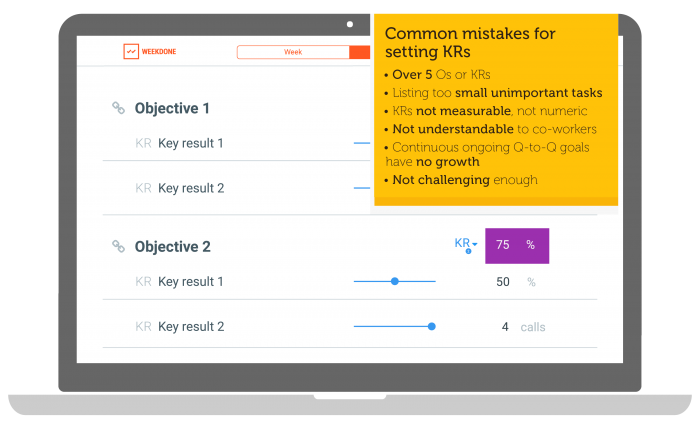During my journey in using Objectives and Key Results (OKRs), I have probably tried every version of it on both myself and in my team. About half a year ago, I began working on ways to improve the information flow in my team. So I could spend less time on-boarding new employees to our goal setting system.
We decided to assign only one Objective and one Key Result to everyone. This made sure that everyone was working with a singular focus and understood perfectly what was expected of them during the quarter.
This of course didn’t mean that everyone was left to work on only one thing. But it made sure that we all understood that the goal set by our OKR was our priority.
We call this type of system Lean OKRs.
Making OKRs leaner and easier
When you first hear about OKRs and how successful they’ve been at Google and other tech companies, you get excited to try them out in your team. After all, numerous articles and books make them seem like a magic bullet that solves all of your company’s problems. However, many teams who try out OKRs fail to implement them correctly.
Read our guide to having positive impact on your employees’ work
The his failure often boils down to the fact that, well, OKRs can be very confusing. After talking to countless companies using OKRs, we’ve discovered their are many challenges when you first start using OKRs. These problems can easily be overwhelming.
Mistakes while implementing OKRs
The two biggest mistakes we’ve see when setting OKRs are:
- Setting too many Objectives or Key Results;
- Not prioritizing their OKRs.
That is why we’ve been working on an implementation guide for “Lean OKRs”. This is an OKR system where most of the problems first time users face are solved by implementing a simplified version of the methodology. I have been testing it with my team for the last quarter and it is very effective.
When you have a lot of OKRs, people will either be overwhelmed and think “I can’t do it all” or try to achieve them all at the same time. That leads to a lot of stress, confusion, and unhappiness. As a result, most objectives will fail and you’ll feel the system is not working.
Many times, I’ve started by setting 3 – 4 OKRs with 3 KRs, but ended up with 5 Objectives and 25 KRs as everything seems important. Picking only one Objective is harder and easier in that sense: there is no room to add “the other KR” as well.
You can use the Pareto principle to figure out the one Objective your team needs. The principle states that 80% of the effects come from 20% of work. So, for your objective you can set the one impactful goal that moves your team forward the most. As Warren Buffett once said: “You only have to do a very few things right in your life so long as you don’t do too many things wrong.”
Weekdone offers many resources and guides to implement the OKR system. However, there is no foolproof way to make sure the system sticks. The bigger the team the harder it is. That is why, you should first try to implement the Lean OKRs system.
Giving up individual OKRs
[Tweet “To simplify #goal setting, you don’t have to set individual #OKRs at all”]
To further simplify the OKR process, you don’t have to set individual OKRs at all and can set them only on a team and company level.
One of the more well-known OKR coaches, Felipe Castro, told us that “Individual OKRs are not for everyone and should never be required. Good OKRs follow good metrics, and for many roles, the indicator belongs to the team. In fact, companies such as Twitter and Spotify abandoned individual OKRs.”
His message is simple: “Use as few OKR levels as possible.
Surprising benefits of Lean OKRs
The unexpected benefit I’ve gotten out of the Lean OKR system is that it helped me prioritize and to focus on the tasks that are most important for the company.
It makes it a lot easier to run performance evaluation in our teams as well. The only question I need an answer to in our weekly meetings is: “What have you done this week to accomplish your objective.”
Try setting your first Lean OKRs in Weekdone. If you feel the system works for you, you can try the more complicated structures later. And if you have any more questions about OKRs, take a look at the OKR FAQ and OKR Examples. If you need help selling the idea of OKRs to your employees, read our employee guide to getting started with OKRs.


